How to find out about the present or the history of a local area?
When investigating our past, we need to look at various things and resource information that helps us understand who we are. These things are called sources. We will be looking at different sources such as pictures, people, objects and writing.
Learning about local history through pictures: Cape Town
Pictures are a great source to use to learn about history. Learners will be developing visual literacy through the analysis of images.
Below are two examples of using images to learn about history
Adderley Street is one of the most historically significant streets in Cape Town. The street was named after Charles B Adderley, a member of British Parliament who fought against the British appeal to turn Cape Town into a convict colony or place for prisoners to be sent.
On 13 October 1881, Adderley Street got its first electric lights. Today the street is very popular place for tourists to visit. It is also close to other historical places like the Old Slave Lodge Museum, Groote Kerk (the oldest church in South Africa) and the Company Gardens. It has also been home to flower sellers for over 100 years.
Below is the picture of Adderley Street during the festive season
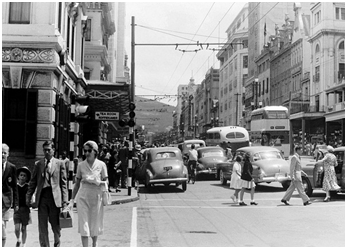 Adderley Street Christmas shopping in 1953 Image source
Adderley Street Christmas shopping in 1953 Image source
During Christmas time, the street comes alive with decorative Christmas lights that locals and tourists love to come and see.
Below is the picture of Adderley Street festive season lights in 2014
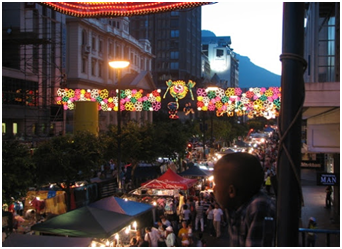 Adderley Street festive season lights 2014 Image source
Adderley Street festive season lights 2014 Image source
The above images show Adderley Street through different periods of history. Learners can gain information about local and present history by investigating the pictures
Possible questions to ask:
What do you see in each picture?
When was each of the pictures taken?
How can you tell which picture is the oldest and the newest?
Describe what is happening in each picture?
What do you notice about the people in each picture?
What differences do you notice about the pictures: clothing, technology etc.?
Have you ever been to Adderley Street during the festive season?
2. Cape Town cycle tour
The First Cape Town cycle tour in 1978
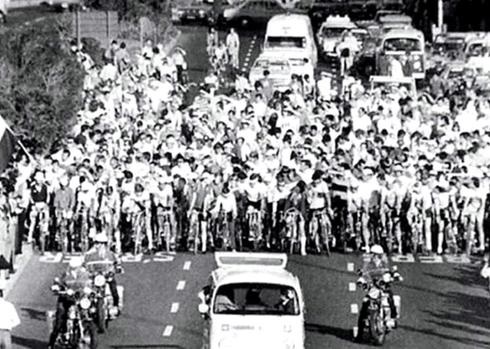 The First Cape Town cycle tour in 1978 Image source
The First Cape Town cycle tour in 1978 Image source
The Cape Town Cycle Tour (formerly known as the Cape Argus Pick n Pay Momentum Cycle Tour) first took place in 1978, and only with 525 participants. Currently the event attracts cyclists from all over the world and is the largest individually timed cycling event on earth.
Cape Town cycle tour in 2012
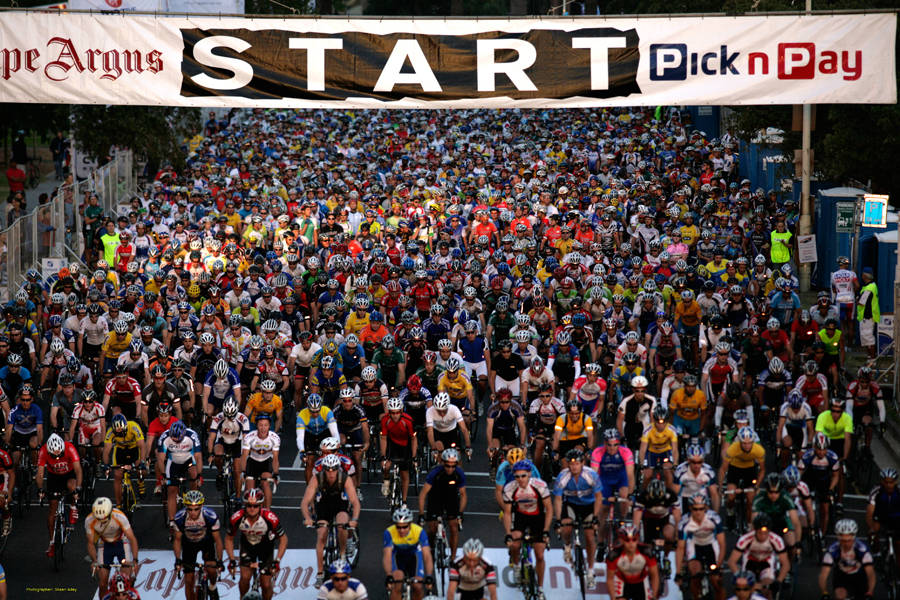 Cape Town cycle tour in 2012 Image source
Cape Town cycle tour in 2012 Image source
By analysing the two pictures above, as done with the previous example, learners can learn about the history of a local event.
Possible questions to ask:
What do you see in each picture?
When was each of the pictures taken?
How can you tell which picture is the oldest and the newest?
Describe what is happening in each picture.
What do you notice about the people in each picture?
What differences do you notice about the pictures: clothing, technology etc?
Have you ever been to the Cape Town cycle tour and seen the cyclists, or do you know anyone who has participated?
Learning about history through writing
One of the easiest ways to learn about our history is through looking at what has been written about it. The below example uses an article from South African History Online, however, a recently written piece can be used to learn about a present situation. Learners can read the article and answer the questions that follow.
| South Africa won and held the world cup in 1995 |
| South Africa hosted and won Rugby World Cup which took place 25 May-24 June 1995, and was the first major sporting event to be staged in country following the end of apartheid and the country’s advent to democracy in 1994. Furthermore this event was the first in the history of Rugby World Cup in which every match was held in one country and the first World Cup in which South Africa was allowed to compete. South Africa was readmitted to international rugby by the then International Rugby Football Board shortly following the end of the international sports boycott due to the apartheid. South Africa participates in the tournament for the first time. In the final, held at Ellis Park in Johannesburg on 24 June, South Africa wins the tournament, defeating New Zealand 15-12. Following South Africa's victory, Nelson Mandela, the then President of South Africa, wearing a Springboks rugby shirt and cap, presented the Webb Ellis Cup to the South African captain François Pienaar. This was a major milestone for the history of South African rugby which had long been an exclusively “white” sport. |
Students can write down words they do not understand and search for their definitions.
Possible questions:
What is the article about?
When did the Rugby World Cup start?
Which country hosted the event?
Which two teams played in the final?
Which country won the final?
Why was this important for South Africans at the time?
In your own words, what have you learnt about the history of South Africa from this article?
Learning about history through objects
In history, sometimes we do not have written records or pictures to help us find out information about the past, only the objects left behind. These objects are called artefacts. The word artefact comes from the latinarte meaning skill and facere meaning to make, so all artefacts are made or were used by man.
Archaeologists are people who look at these artefacts and can tell a lot about the people who left them behind. In this topic learners get to be an archaeologist!
Look at the picture below and answer the questions that follow. Remember that sometimes we cannot tell everything from the artifacts left behind
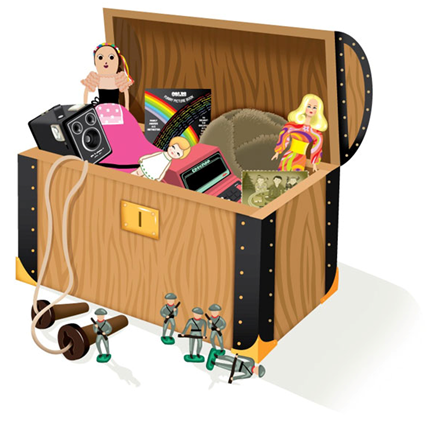 My Grandmother’s Toy Box Image source
My Grandmother’s Toy Box Image source
This is a picture of a toy box Ariel found in the attic. It has toys that belonged to her mother and her uncle. By investigating the objects you can help Ariel learn more about their lives.
Possible questions:
What objects can you see in the box?
Do you think this is a box of new toys?
What games do you think Ariel’s mother and uncle played when they were young?
What is your favourite toy?
How do you know that these objects are not new?
What games do you play?
Do you think Ariel’s mother and uncle played all the same games that you play today? What games didn’t they play?